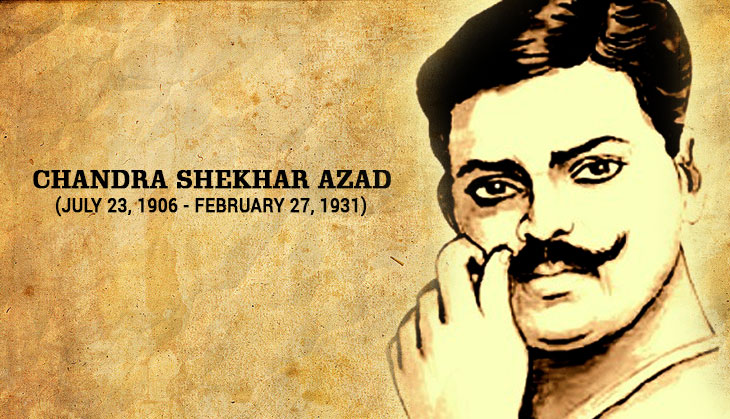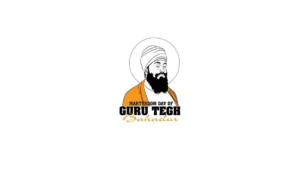Chandrasekhar Azad was a great freedom fighter who played a key role in India’s struggle for independence. He was known for his bravery, strong patriotism, and fearless nature. Azad believed in fighting against British rule with full strength and never surrendering. His life and sacrifices continue to inspire people even today. He was a true hero who dedicated his life to India’s freedom.
Chandrashekhar Azad Biography
Chandrashekhar Azad was born on 23 July 1906 in Bhabhra Village as Chandrashekhar Tiwari in a Brahmin family in the princely state of Alirajpur. He was deeply influenced by the Jallianwala Bagh massacre of 1919 which led him to be a part of India’s Freedom Struggle.
His forefathers were from Badarka village of Unnao district of Uttar Pradesh. His mother, Jagrani Devi wife of Sitaram Tiwari, wanted his son to be a great Sanskrit Scholar and send him to Kashi Vidyapeeth at Benares to study.
In 1921, when the Non-Cooperation Movement was at its peak, he joined the movement when he was just 15-year old student. As a result he was arrested on 20th December, on being presented before magistrate, Justice M.P. Khareghat, he was given name as ‘Azad’ and his father ‘Swatantra’ and his residence named as ‘Jail’. He was punished with 15 lashes.
Chandrashekhar Azad Birth Place
Chandrashekhar Azad was born in Bhabhra Village, Madhya Pradesh, which is now known as Chandrashekhar Azad Nagar in his honor.
Chandrashekhar Azad Caste
Azad belonged to a Brahmin family. His full name was Chandrashekhar Tiwari, but he later gave up his surname and became known as Azad (The Free Man).
Revolutionary Life of Chandrasekhar Azad
The Hindustan Socialist Republic Association:
Chandrashekhar Azad became an active member of Hindustan Socialist Republic Association (HSRA) and started to collect funds for HSRA, formed by Ram Prasad Bismil in 1928. He advocated armed struggle as a means to overthrow British rule.
Role in Kakori Train Robbery:
He involved in the Kakori Train Robbery on 9 August 1925 near Lukhnow which was done with the aim to collect funds for the HSRA and other revolutionary activities. This brought Azad and HSRA into the limelight, intensifying British efforts to capture them.
Other Revolutionary Activities:
He was involved in the shooting of John P. Saunders at Lahore in 1928 to avenge the killing of Lala Lajpat Rai. He was also attempted to blow up the Viceroy of India’s train in 1929.
Activities in Jhansi
Azad used Jhansi as his organization’s hub for some time. He used the forest of Orchcha, situated 15 km from Jhansi, as a site for shooting practice and he also trained other members of his group.
He taught children from the nearby village of Dhimarpura and thus managed to establish a good rapport with the local residents.
Sadashivrao Malkapurkar, Vishwanath Vaishampayan and Bhagwan Daas Mathur came in close contact with Azad and became an integral part of his revolutionary group.
Encounter at Alfred Park (Company Bagh)
Azad’s impact on the British Raj law enforcement faction was evident from how much effort they put to capture him dead or alive. They even announced a reward of Rs.30,000 on his head, this led to vital information on the whereabouts of Azad. At Alfred Park in Allahabad on 27 February 1931, Azad fought valiantly and single-handedly against a large number of police officers and choose to die as a free man rather than surrender.
Legacy and Inspiration of Azad
- Azad continues to inspire generations of Indians with his courage and determination.
- He served as a symbol of selfless devotion to the motherland and unwavering commitment to the cause of freedom.
- His commitment to armed struggle left an indelible mark on Indian history.
Commemoration
- Numerous educational institutions, parks and public places across India named after him to honor his memory.
- His name invoked as a source of inspiration in India’s quest for justice and freedom.
- He remains a symbol of bravery and defiance against oppressive forces.



 Haryana Assembly Passes Resolution to Co...
Haryana Assembly Passes Resolution to Co...
 Which Country is Known as the Land of Ch...
Which Country is Known as the Land of Ch...
 Operation Hawkeye: US and Jordan Strike ...
Operation Hawkeye: US and Jordan Strike ...







